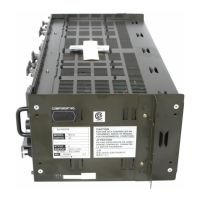3. Cabling
3-30
TI 33Q01J10-01E
3.5 Connecting Signal Cable
The terminals or connectors of field control station I/O modules interface I/O signals from
the field.
Process I/O Signal Connection
• Power, Control Bus, and signal cables must be separately laid. Avoid laying them in parallel.
• The use of group-shielded twisted-pair cables is recommended for analog signal input
specifically in order to prevent induction noise. A twisted-pair cable pitch of 50 mm or less
should be used and the shielded cables must be grounded.
• The use of twisted-pair cables is also recommended for digital signals.
• The twisted-pair cable has the following advantages over a solid wire:
- More flexible for easy curving and cabling in limited spaces.
- With good contact and durable in using a solderless contact.
• Signal cables must be clamped so that their weight does not affect terminals.
• Use solderless lug or pressure clamp terminal contact when process I/O signals are
connected with terminals.
Solderless Lug
• The CS 3000 system uses spring terminals for RIO signal and RIO bus connections.
• Use the solderless contact with an insulation covering.
• Use the solderless contact and crimp tools of the same make.
• Use correct-size crimp tools according to cable sizes.
• When the door is attached or detached for cable connection, be sure to then OFF the power
of the main unit before connecting or disconnecting a cable.
Pressure Clamp Terminal
• The CS 3000 uses a pressure clamp terminal for signal connection of FIO.
• For cable connection with a sleeve attached, use a sleeve and a clamp tool from the same
manufacturer.
• Use a clamp tool which suits the cable thickness.
• When the door is attached or detached for cable connection, be sure to then OFF the power
of the main unit before connecting or disconnecting a cable.
May 18, 2007-00

